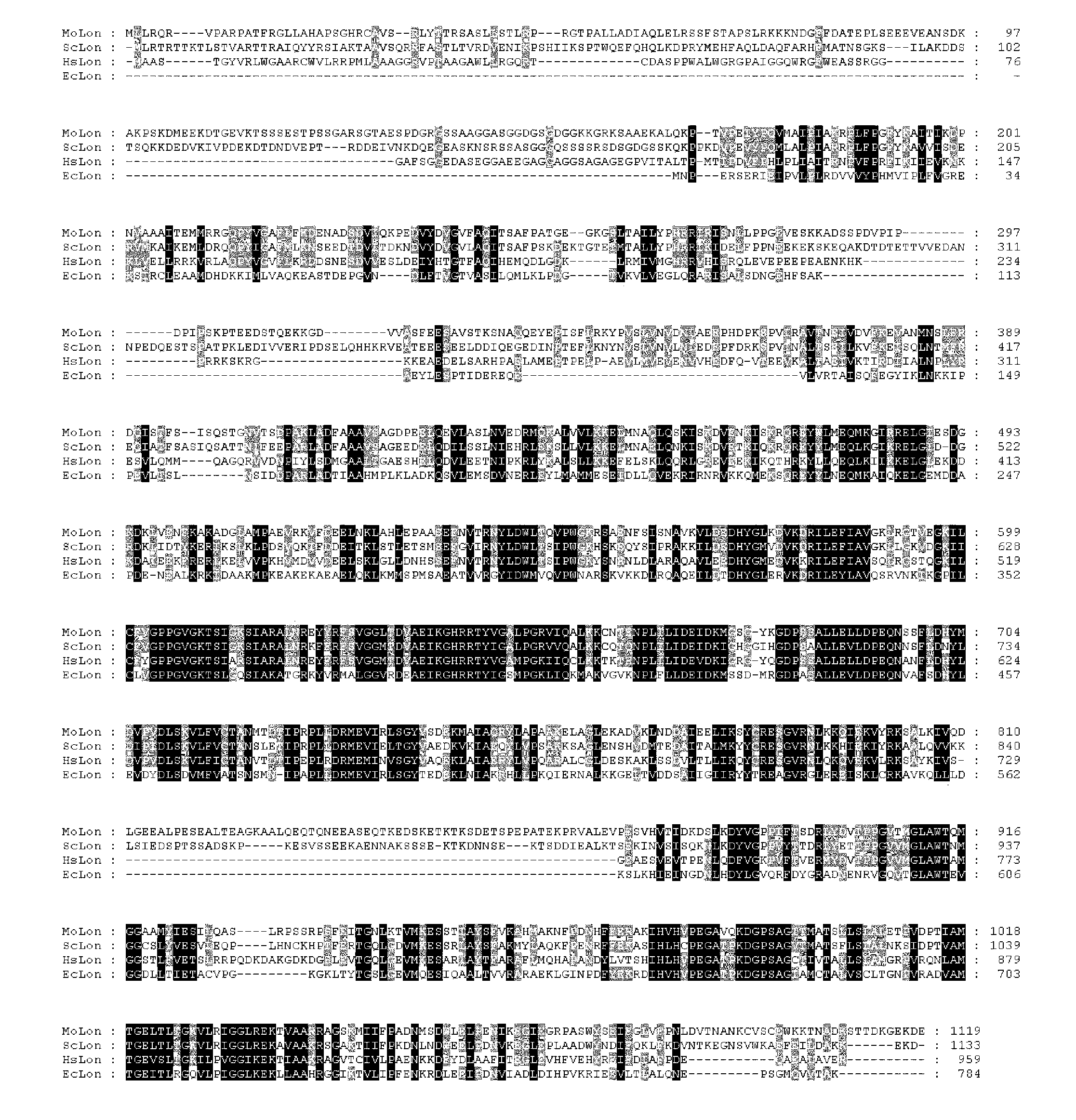Magnaporthe grisea MoLON1 gene function and application thereof
A rice blast fungus and gene technology, applied in application, genetic engineering, plant genetic improvement and other directions, can solve problems such as non-infectious growth, and achieve the effect of reducing the number of disease cycles and weakening rice blast.
- Summary
- Abstract
- Description
- Claims
- Application Information
AI Technical Summary
Problems solved by technology
Method used
Image
Examples
Embodiment 1
[0043] Embodiment 1, correlation analysis of MoLON1 gene
[0044] The MoLON1 gene is located on chromosome 1 of Magnaporthe oryzae, with a full length of 3434bp, containing 1 intron and 2 exons (see figure 1 ). The amino acid sequence of the MoLON1 gene was compared and analyzed (http: / / blast.ncbi.nlm.nih.gov / ), and it was found that the MoLON1 gene is ubiquitous in a variety of organisms and has a high homology (see figure 2 ).
Embodiment 2
[0045] Example 2, knockout analysis of MoLON1 gene
[0046] 1) Construction of knockout vector
[0047] Gene knockout adopts the method of homologous recombination, and replaces part of the coding region of the MoLON1 gene in the wild-type strain MoJJ88 with the hygromycin phosphotransferase gene. For the specific construction strategy, see image 3 . Using the wild-type strain MoJJ88 genomic DNA as a template, primers pX-up1 (5'GCTCTAGAATGTACCTAGGATGG 3', 5' end containing Xba I restriction site) and pX-up2 (5'CGGGATCCTTGATGGTTATTGCT 3', 5' end containing BamH I restriction site) as the left arm, using primers pX-down1 (5'GGGGTACCACGATGCCATTGAGGAGC 3', the 5' end contains Kpn I restriction site) and pX-down2 (5'GGAATTCGGAAAGACGAGCCCGAAG 3', 5' The fragment amplified from the 'end contains the EcoR I restriction site) was used as the right arm. After digestion, they were respectively connected to both sides of the hygromycin phosphotransferase gene in the vector pXEH accord...
Embodiment 3
[0054] Embodiment 3, vegetative growth status analysis
[0055] The solid CM plate culture method was adopted. The bacterial block was inoculated on a solid CM medium plate, cultured in the dark at 25°C for 8 days, and photographed for observation. Compared with the wild type, the colony growth rate of the mutant was slowed down, and the number of aerial hyphae was significantly reduced (see Figure 4 ).
PUM
 Login to View More
Login to View More Abstract
Description
Claims
Application Information
 Login to View More
Login to View More - R&D
- Intellectual Property
- Life Sciences
- Materials
- Tech Scout
- Unparalleled Data Quality
- Higher Quality Content
- 60% Fewer Hallucinations
Browse by: Latest US Patents, China's latest patents, Technical Efficacy Thesaurus, Application Domain, Technology Topic, Popular Technical Reports.
© 2025 PatSnap. All rights reserved.Legal|Privacy policy|Modern Slavery Act Transparency Statement|Sitemap|About US| Contact US: help@patsnap.com



